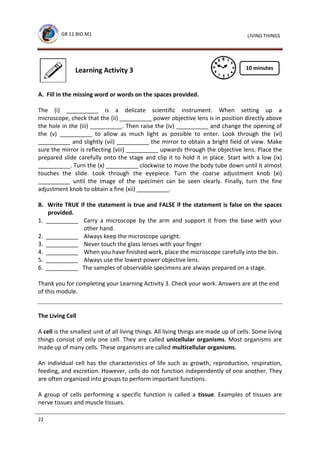The Grade 11 Biology Module 1 from the Department of Education of Papua New Guinea focuses on living things, including their structures, functions, and classification systems. It aims to provide students with a comprehensive understanding of cell biology and the Linnaean system of classification while emphasizing the importance of a student-centered curriculum. The module includes hands-on activities, theoretical knowledge, and acknowledges contributions from educational staff, developed with support from the Go-PNG and World Bank.









































































